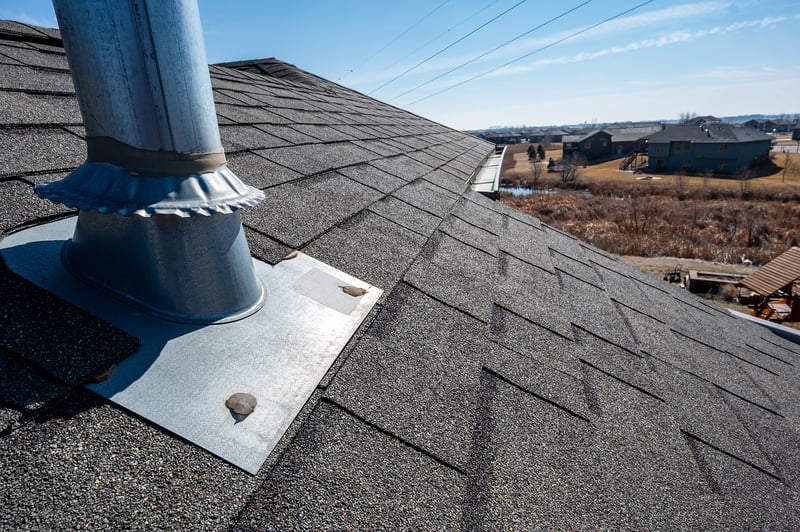While roofing materials like shingles provide the bulk of protection against the elements, roof flashing is designed to protect the most sensitive areas, such as in the valleys or around chimneys. Flashing that is damaged or incorrectly installed can direct large amounts of water into poorly protected areas of the structure, rather than safely down the roof and into the gutters.

What is Roof Flashing?
Roof flashing is typically a sheet of metal, rubber, plastic, or composite material that is either pre-formed or shaped on-site. It is installed in any transition between the roof and another surface, such as:
- Chimneys
- Flues
- Dormers
- Skylights
- Plumbing Vents
- The valley where two roof surfaces meet
Metal flashing is typically made from galvanized steel, though aluminum, zinc, and copper are also commonly used. Flashing for flues, plumbing vents, or other roof penetrations is usually a single-piece, pre-formed assembly that slips over the top of the pipe or vent, and the base is then shingled over.
How Does Roof Flashing Work?
Roof flashing is designed to collect and direct water down the roof, similar to shingles. In valleys, the roof flashing spans across the valley, and the shingles from each side are installed over the top of the flashing, creating a waterproof channel that can direct large amounts of water down to the eaves and gutters.
Dormers use two types of flashing. Where the front dormer wall meets the roof, long L-shaped flashing is installed below the siding and bent to lay on top of the shingles below, directing water from the siding to the top of the shingles and off the roof. On the sides of the dormer, one piece of L-shaped step flashing is installed with each course of shingles, overlapping slightly from the bottom to the top. This creates a stepped slope that channels water safely down the sides of the dormer.
At chimneys, a large single piece of flashing is used on the downhill side of the slope, and step flashing is used on the sides to direct water down the roof. At the rear, a ridge is created to direct water around the chimney and down. Skylights often include their own flashing and the appropriate sealants.
The Benefits of Roof Flashing
Roof flashing is essential to the integrity and water resistance of your roof. It can be formed to fit around corners or odd angles to protect areas that shingles cannot reach. It also protects vulnerable transitions between vertical surfaces and the roof, as well as any roof penetrations for utilities. Installed properly, flashing can last for decades, but eventually, corroded fasteners, wind, or foot traffic can loosen or damage the flashing.
Roof Repair in Las Vegas
When you need flashing repairs, roof repairs, or a roof replacement in the Las Vegas area, contact our team at First Quality Roofing & Insulation. We feature licensed, experienced roofers, top-quality work that is backed by a 100% satisfaction guarantee, upfront pricing, up to 100% financing, and great warranties.
Call 702-262-7847 today or contact us online to request a quote for roof repairs in Las Vegas, Henderson, Pahrump, Mesquite, or the surrounding areas.
















